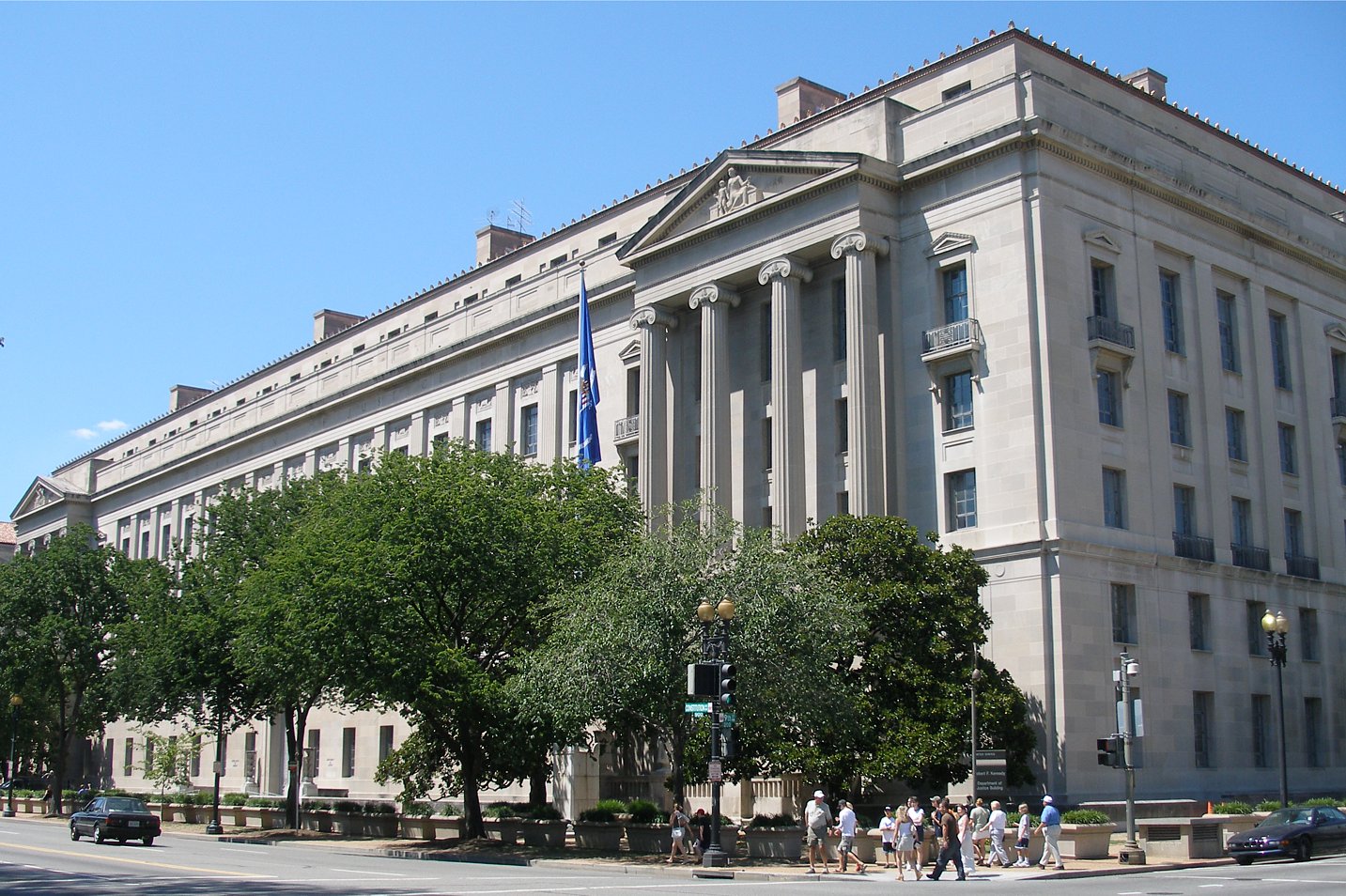Travel Ban Update: Fourth Circuit Affirms Injunction as Supreme Court Awaits Argument
Acting against the backdrop of the Supreme Court’s grant of certiorari in Hawaii’s challenge to the third iteration of President Trump’s travel ban (EO-3), the Fourth Circuit on Thursday by a vote of 9-4 affirmed the injunction in the other travel ban challenge, International Refugee Assistance Project v. Trump.
Published by The Lawfare Institute
in Cooperation With

Acting against the backdrop of the Supreme Court’s grant of certiorari in Hawaii’s challenge to the third iteration of President Trump’s travel ban (EO-3), the Fourth Circuit on Thursday by a vote of 9-4 affirmed the injunction in the other travel ban challenge, International Refugee Assistance Project v. Trump. Since the Supreme Court had stayed injunctions against EO-3 in December, the Fourth Circuit’s decision had less immediate impact than the Ninth Circuit’s December decision, which triggered certiorari. Nevertheless, the concurrences by Judges Gregory and Keenan on EO-3’s inconsistency with the Immigration and Nationality Act (INA) tee up arguments that might command a majority of the Supreme Court. However, the configuration of votes among the Fourth Circuit’s judges—who unburdened themselves in eight separate opinions totaling 285 pages—suggested that the challengers have work ahead of them to elicit that favorable reception at the next level.
Heralding the challengers’ need to bring their A-game to the high court, only the challengers’ establishment clause argument garnered a majority of the Fourth Circuit’s judges. This is a problem, because the Supreme Court has never applied the establishment clause to a foreign policy decision, and doing so would open up a plethora of government measures to judicial scrutiny. The Supreme Court seems unlikely to open those floodgates. That leaves the INA argument that the Ninth Circuit cited: EO-3 reads a single provision, 8 U.S.C. §1182(f), “in isolation,” instead of considering the INA as a “harmonious whole,” as the Supreme Court has urged that courts should read statutes. In a puzzling turn that EO-3’s challengers need to address at the Supreme Court, the INA argument only got five votes on the Fourth Circuit (Judges Gregory, Wynn, Harris, Diaz, and Thacker), while three generally liberal judges (Harris, Motz, and King) joined the majority on the constitutional issue but felt that the statutory issue was too complex to resolve. Moreover, four judges (Niemeyer, Shedd, Agee, and Traxler) believed that the challengers should lose either on threshold issues such as reviewability and standing or on the merits of both the constitutional and statutory claims.
The good news is that the opinions by Judges Gregory and Keenan addressed the statutory argument comprehensively. Confronting the venerable doctrine of consular nonreviewability, which has long insulated consular decisions on visa applications from judicial review, Judge Gregory distinguished between a particular negative consular outcome, which is unreviewable under the statute (although it may reviewable under the Constitution), and a construction of the president’s authority to act. The sheer numbers of consular decisions, which add up to millions of decisions annually, would make statutory review of individual consular decisions impracticable. In addition, each individual decision can entail a consular officer’s careful weighing of myriad factors, including whether the visa applicant will burden U.S. taxpayers, fund terrorist groups, or try to overstay in the United States upon expiration of her nonimmigrant visa. There would be “no law to apply” to such fine-grained determinations, just as the Supreme Court said in rebuffing an effort by anti-death penalty groups to mandate that the federal Food and Drug Administration take action against a company that made products used in imposing the death penalty. In contrast, there is “law to apply” in the challenge to EO-3—the court can simply read 8 U.S.C. § 1152(f) in context, along with other relevant provisions and legislative history, as part of the INA’s “harmonious whole.”
The latter, Judge Gregory noted, was simply what courts do on a regular basis. Buttressing this point with a look at the structure of the INA, Judge Gregory noted that Congress had expressly barred judicial review of many administrative immigration decisions. For example, in 8 U.S.C. §1182(a)(9)(B)(v), Congress precluded judicial review of decisions by the attorney general to waive (or refuse to waive) a restriction on the admission of foreign nationals who had accrued periods of unlawful presence in the United States. Congress could have expressly barred review of exercises of presidential authority under 8 U.S.C. § 1882(f) (the “entry” provision), which allows the president to bar the entry of foreign nationals whose entry would be “detrimental to the interests of the United States”). That issue was front and center after the Supreme Court, in Haitian Centers Council v. Sale, reviewed a decision by President Clinton, following the lead of Presidents Reagan and Bush, to use §1182(f) to interdict inadmissible foreign nationals who had taken to the high seas in unsafe vessels in hopes of reaching the United States. Given Sale’s prominence and the copious other instances of restrictions on judicial review under the INA, Congress’s failure to preclude judicial review of exercise of authority under §1182(f) suggests that judicial review of the president’s authority under this provision is consistent with legislative intent.
To assess the substantive validity of the president’s broad reading of §1182(f), both Judge Gregory and Judge Keenan read the provision “in context”—not in in “isolation”—in order to assess whether the government’s construction of the provision exceeded the delegation contemplated by Congress. That “common sense” approach weighs the government’s reading against the backdrop of the INA’s carefully calibrated “overall statutory scheme.” This approach to the delegation of authority stems from the Supreme Court’s opinion in FDA v. Brown & Williamson, which also drove the amicus brief that I and co-counsel Alan Schoenfeld of WilmerHale submitted to the court (full disclosure: we’re submitting a similar brief to the Supreme Court). Viewed in context, §1182(f) plays an interstitial, “gap-filling” role far removed from the sweeping authority to remake the INA that President Trump has claimed.
The INA’s overall scheme for immigrant visa processing places family unity “first and foremost.” Under the INA, the bulk of visas go to close relatives of U.S. citizens or lawful permanent residents (LPRs)—spouses, children, and parents; despite the erroneous assertion in President Trump’s State of the Union Address, the INA does not authorize the issuance of visas to “distant” relatives (or even not so “distant” relatives such as grandparents, aunts, uncles, or cousins).
To determine that visa applicants are in fact close relatives of citizens and LPRs who are eligible for immigrant visas, the INA looks to the diligence and expertise of consular officials around the globe, who receive comprehensive training from the State Department and support from other government agencies, including the Department of Homeland Security. The rules under which consular officials operate require them to ascertain the accuracy of information submitted by visa applicants; in countless iterations that immigration attorneys know well, consular officials have issued requests for further information that applicants must provide or have denied applications when that information is not forthcoming. Consular officials show the same care in assuring themselves that visa applicants are not inadmissible because of the many specific grounds listed in §1182, including criminal history, terrorist ties, or the risk that an applicant will become a burden to U.S. taxpayers.
As Judge Gregory noted, Congress has recently expressed its faith in the ability of consular officials to implement its overall plan for family visa processing, by providing during the Obama Administration that foreign nationals who have visited a number of the countries listed in EO-3 are ineligible for the visa waiver program. To vet persons who visited several of the countries identified in EO-3, Congress looked to the officials whose training and expertise equipped them for the task: U.S. consular officials. Congress’s move merely reinforced the reliance on consular processing that has undergirded the INA’s “overall scheme” for decades.
EO-3 upends that scheme. It mandates the indefinite exclusion of otherwise-eligible immigrant visa applicants from the countries covered. Although EO-3 purports to temper President Trump’s disruption of Congress’s scheme with a waiver process that allows applicants to “demonstrate” hardship, in practice the waiver system has been illusory. Many applicants have been denied a waiver before they even applied, which denied them the opportunity to “demonstrate” hardship that EO-3 purported to confer, and stands the normal waiver process on its head. These “fundamental changes” to the INA’s fine-grained framework defy the “common sense” that the Supreme Court has enlisted in construing the scope of legislative delegation to the Executive. As Judge Gregory observed, EO-3 “attempts to do more than what Congress has specifically authorized, in response to scenarios that Congress has already foreseen and addressed.”
As Judge Gregory also noted, past practice under §1182(f) is far more cabined. No past president has sought to indefinitely ban immigration from several countries. Presidents Carter and Reagan addressed crises regarding Iran and Cuba, respectively. However, the Supreme Court has long recognized that Congress either authorized or acquiesced in broader executive power to deal with each of those challenging regimes. (For Cuba, see Zemel v. Rusk and Regan v. Wald; for Iran see Dames & Moore v. Regan.) Moreover, as Judge Gregory observed, both Carter and Reagan took care to make special provision for the close relatives of U.S. citizens. That safety valve (along with comparable treatment of the close relatives of LPRs) is conspicuously lacking in EO-3.
To reinforce the incongruity of EO-3’s indefinite ban with the INA’s scheme, Judges Gregory and Keenan (as well as Judge Wynn in a separate concurrence) noted that the ban clashed with the INA’s bar in 8 U.S.C. §1152(a)(1)(A) on discrimination based on national origin in the issuance of immigrant visas. Congress added this provision to put an exclamation point on its abolition of national origin-based immigration quotas. As Judge Wynn recounts in his concurrence, a parade of U.S. presidents, including John F. Kennedy and Lyndon Johnson, had criticized the quotas as unfair, inefficient, and injurious to U.S. foreign policy. The nondiscrimination provision was designed to impose “checks and balances” on the executive’s ability to use unilateral administrative action to reintroduce the discarded quota system. EO-3 is the kind of unbounded unilateral move that Congress sought to prohibit.
In sum, Judges Gregory and Keenan make a strong case that EO-3 exceeds the authority Congress delegated to the president, and Judge Wynn’s discussion of the nondiscrimination provision adds telling detail on the rationale for Congress’s reluctance to provide the president with “unbridled authority.” These arguments attracted five judges on the court. However, it’s puzzling that the additional judges required for a majority opted only for the more tenuous argument that EO-3 violates the establishment clause. This hesitation suggests that EO-3’s challengers will have to sharpen their arguments if they are to prevail in the Supreme Court.




